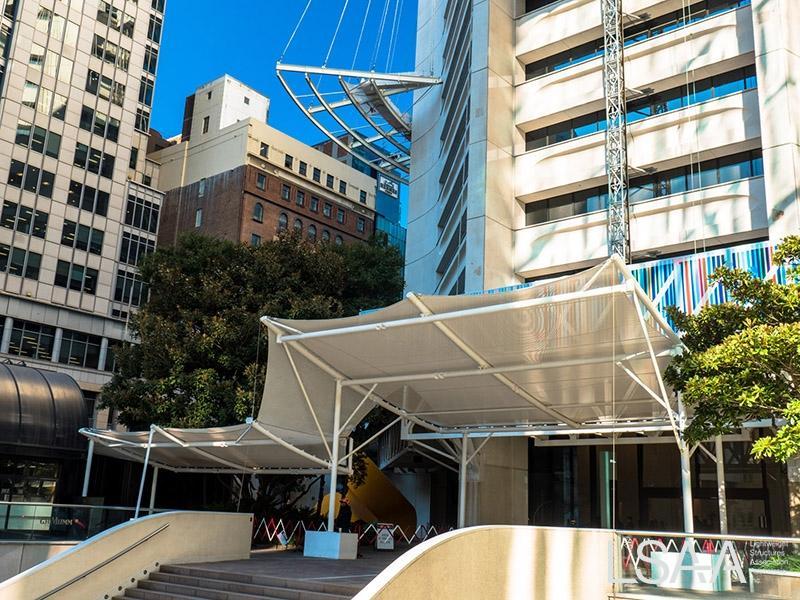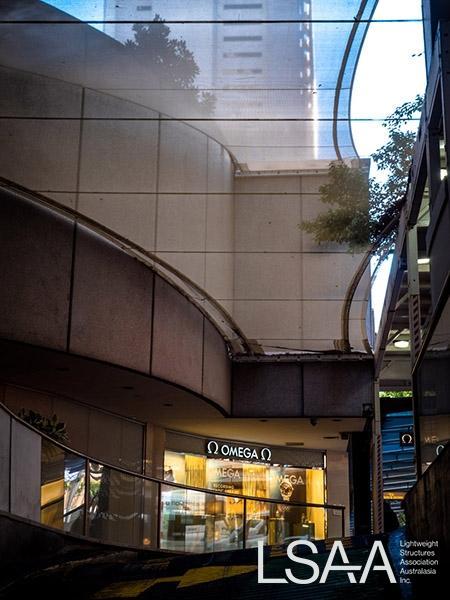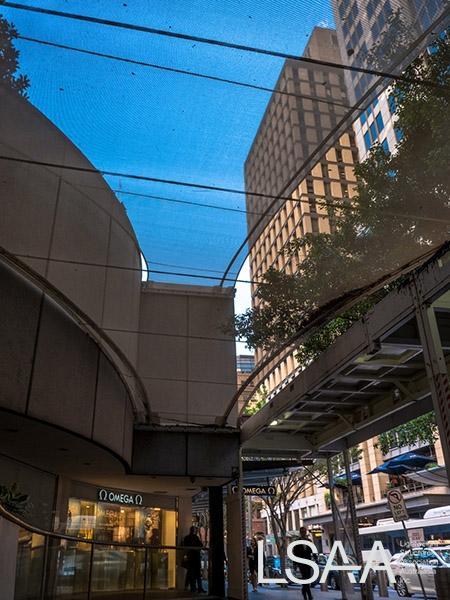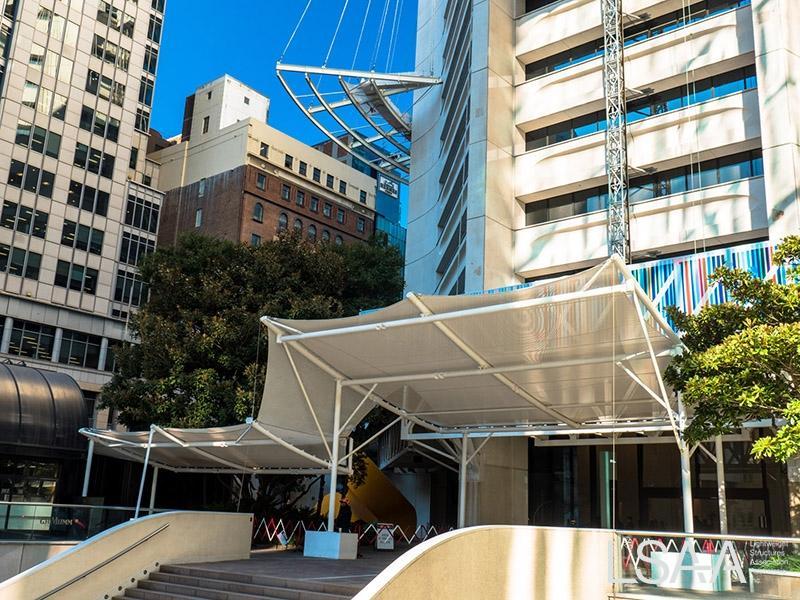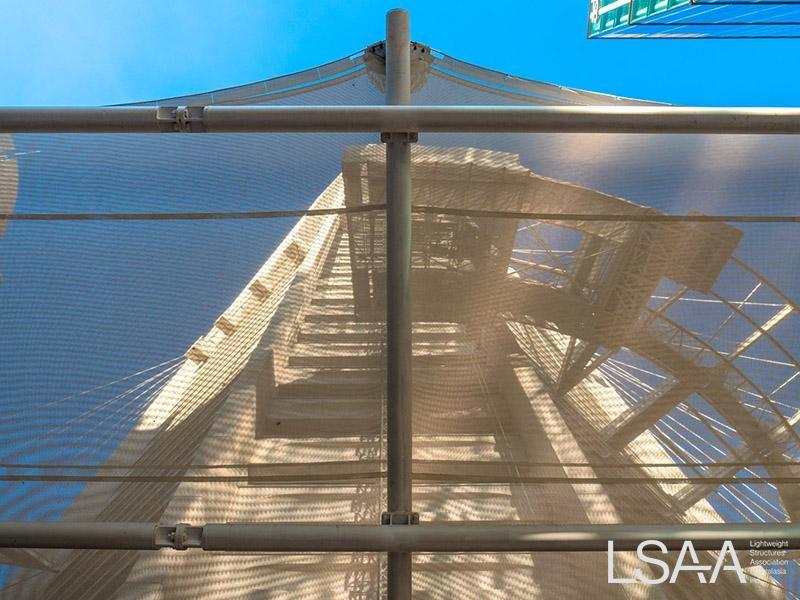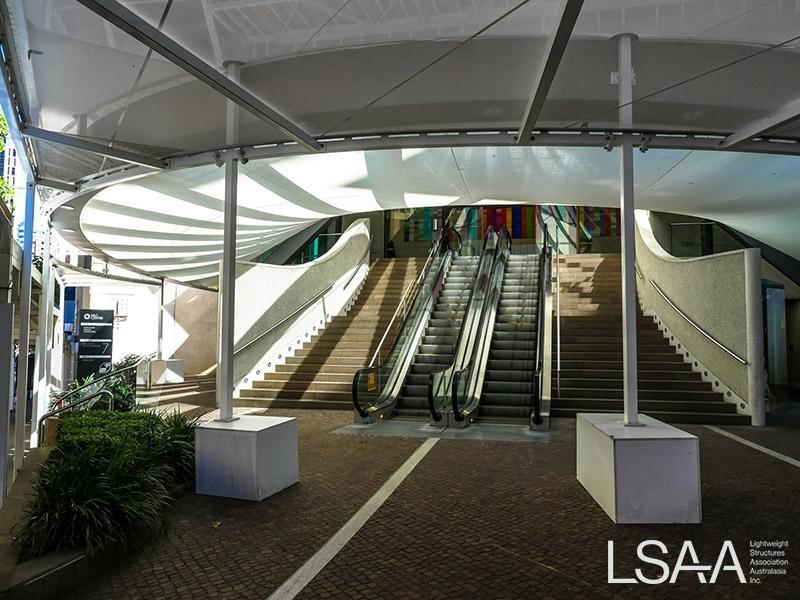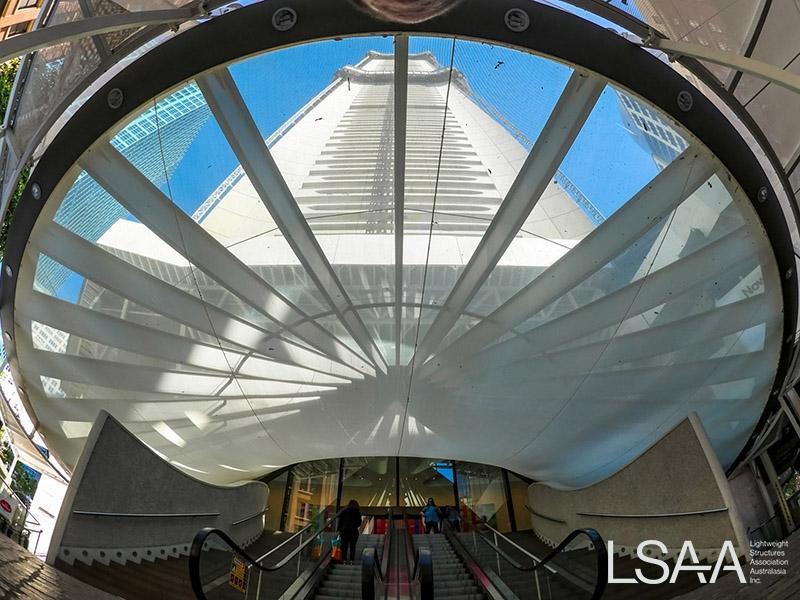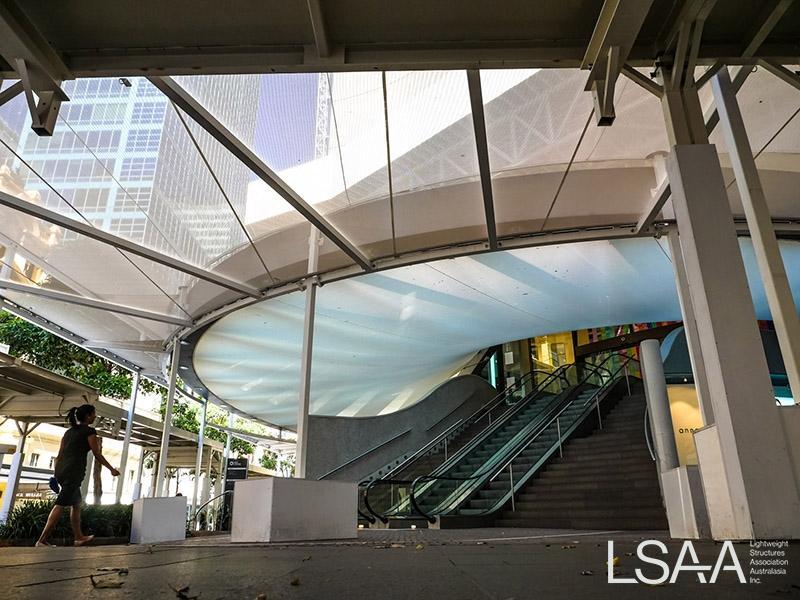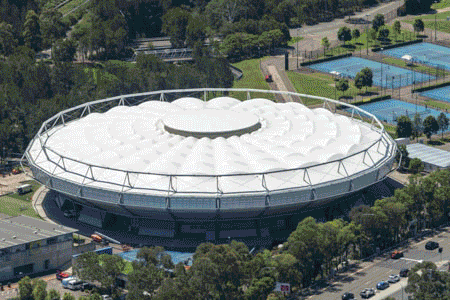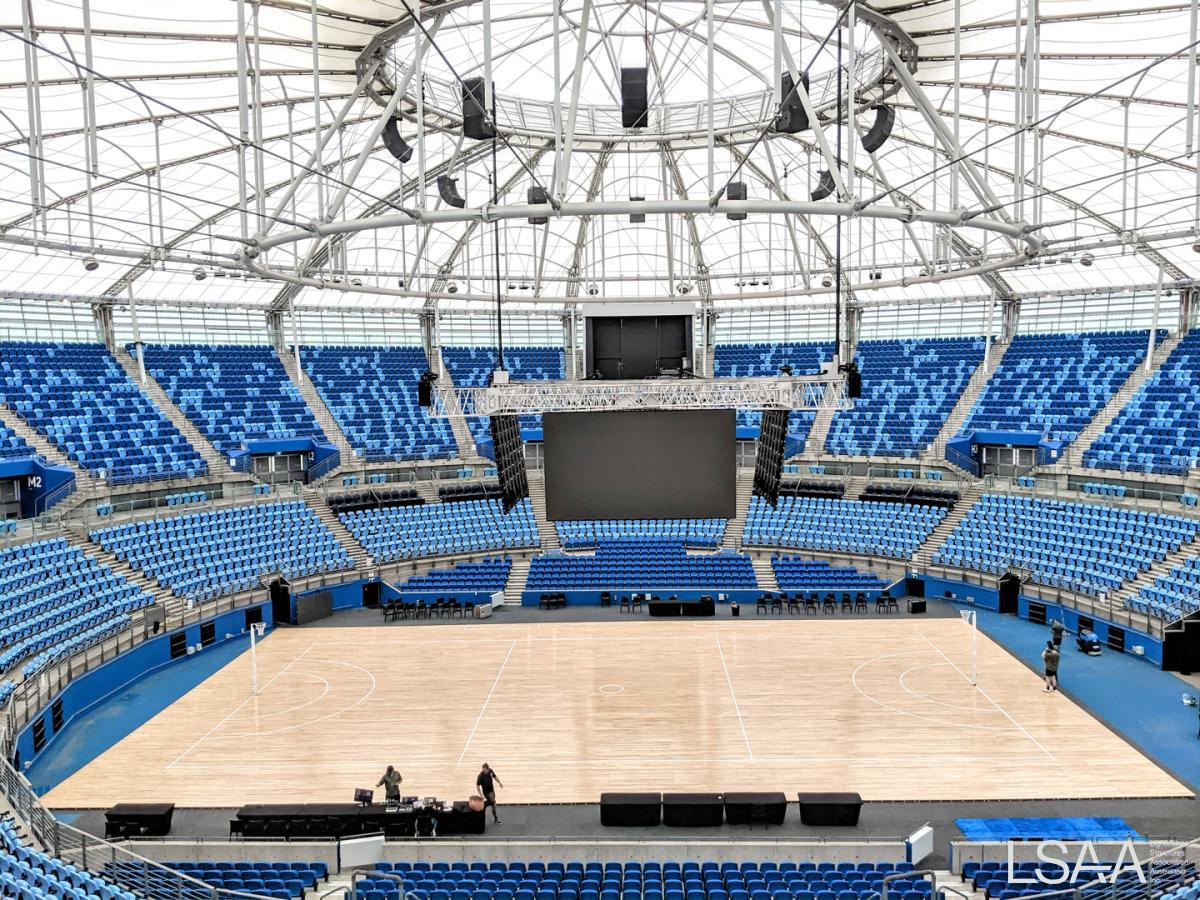Application: Innovative architectural alternative to Safety Hoarding for the construction industry
Project entered in the LSAA 2018 Design Awards (Cat 7 Special Applications, #7700)
PROJECT DESCRIPTION:
The Dual-Skin Safety Netting Structure made from tensioned fabric is changing the way the construction Industry looks at traditional hoarding and safety nets.
Using architectural fabrics and tension membrane engineering outside the square to provide aesthetic cost saving safety control measures.
By providing a safety net structure that could protect the public from the works above saved the client almost $1 million in overtime costs when they would usually be working a night. This solution provided the client the ability to work during the day without closing down the area with the exclusion zones. Prior to the solution, the client could only do these works at nighttime as this project is in one of the largest high-rise buildings in the Sydney CBD.
DESIGN / FABRICATION / INSTALLATION BRIEF
Our client came to us to find an innovative solution to a challenge they were facing on site. We were told if we could provide a solution, then we had a free run on how to make it work.
Our client’s brief was to provide an architectural alternative to standard, heavy and bulky hoarding protection that is used on construction sites to protect the public from falling objects during remedial works.
There were 6 key requirements that needed to be met:
- thesolution needed to protect from a falling object of 2 kg (similar to that of a drill) that could be falling at terminal velocity from 220 m high (the height of the building)
- The solution needed to work in several different geometric applications around the site. Traditional hoarding structures were not possible in these three areas
- The solution needed to maintain natural light to avoid having to artificiallylight the areas during the day. This was a safety requirement and to help remain as bright daytime trade for operating shops and restaurants
- There was a requirement for NO drilling all penetrations into the base of the concrete slab and any columns would require ballast footings to avoid any penetration of the floor membrane. There were levels below on all areas
- The solutions needed to be lightweight as the building had limited loads on the concrete slabs.
- All solutions are to look more “architectural” than “construction site” to reduce complaints from tenants of the building.
In the end, we created a system of using a dual net tensioned fabric safety solution that can change the way the construction industry looks at overhead protection using lightweight materials.
STRUCTURAL SYSTEMS
All three applications were very different. One area had a steel frame structure with a tensioned dual net system, another area had a spanned dual net system, and the third area had a steel framed dual net with a spanned net under a massive glass awning.
One of the trickiest parts about this project, was during the engineering stage, where we had to complete several different forms of analysis to meet the practical requirements.
Both materials used in this solution do different jobs – The top material breaks the fall and reduces the velocity of the object, whilst the other material takes more load and provides the protection from falling through.
Although we use FEM software for tension fabric analysis, there were many other scenarios that had to be considered eg, the geometry of the potential falling objects and what point of that object would be likely to hit the net first.
MATERIALS
This project is unique as we’re using PVC mesh and shade cloth mesh in an application where it is not usually used. It is incorporating our experience in architectural structures and some innovative engineering to find the right materials to provide the right result.
OTHER INFORMATION
After this first successful stage we were then engaged to provide three more solutions on this particular site, to save the client more money during the construction stage and kept their tenants and the council happy by providing more shade for lunch trade and keeping everyone safe.
Since then we and have been approached by several other construction companies who have seen and heard of our solution to consult and to manufacture and install this Dual-Net Safety System.
CREDITS
Entrant: Pattons
Ref Gallery: 2018_Images/Award_Entries/7700_MLC_Safety_Nets DPID 275


